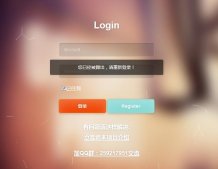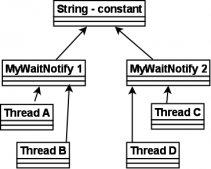本文实例讲述了java使用观察者模式实现气象局高温预警功能。分享给大家供大家参考,具体如下:
一、模式定义
观察者模式,又称为发布/订阅模式。观察者模式定义了对象间的一种一对多的依赖关系,当一个对象的状态发生改变时,所有依赖于它的对象都得到通知并被自动更新。
二、模式举例
1 模式分析
我们借用气象局高温预警来说明这一模式。
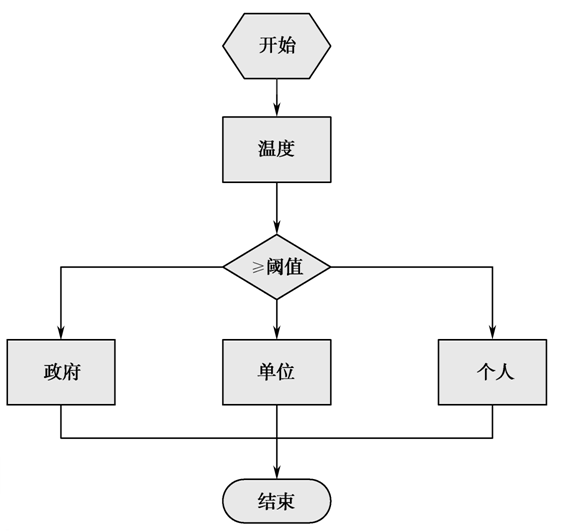
2 观察者模式静态类图
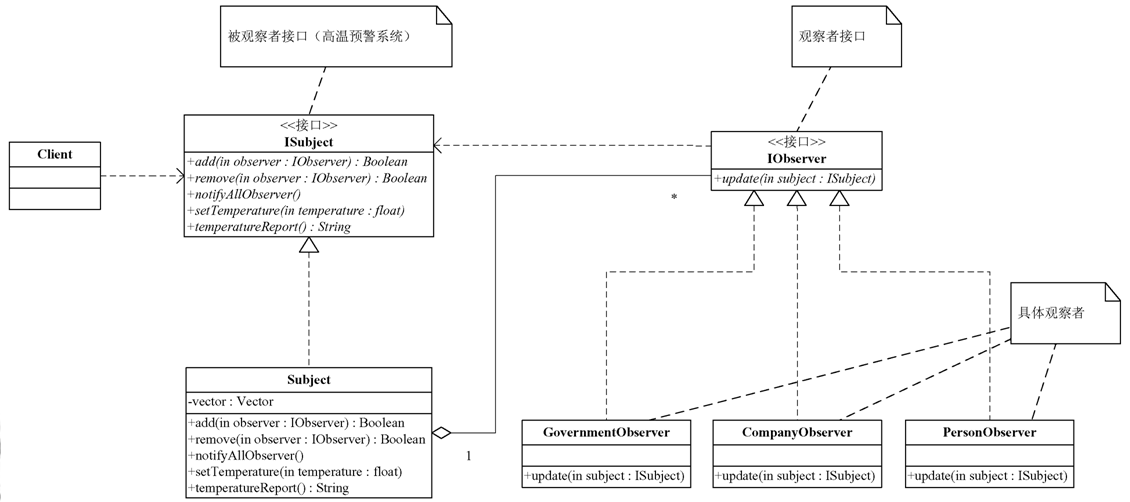
3 代码示例
3.1观察者接口一iobserver
|
1
2
3
4
5
6
7
8
9
10
11
12
|
package com.demo.observer;import com.demo.subject.isubject;/** * 观察者接口 * @author * */public interface iobserver{ //更新方法 public void update(isubject subject);} |
3.2主题接口一isubject
|
1
2
3
4
5
6
7
8
9
10
11
12
13
14
15
16
17
18
19
20
21
22
23
24
25
26
27
28
29
30
31
32
33
34
35
36
37
38
39
40
41
|
package com.demo.subject;import com.demo.observer.iobserver;/** * 主题接口(被观察者) * * @author * */public interface isubject{ /** * 增加观察者 * * @param observer * @return */ public boolean add(iobserver observer); /** * 删除观察者 * * @param observer * @return */ public boolean remove(iobserver observer); /** * 通知所有观察者更新数据 */ public void notifyallobserver(); /** * 设置温度值 * * @param temperature */ public void settemperature(float temperature); /** * 获得温度预警 * * @return */ public string temperaturereport();} |
3.3具体主题实现一subject
|
1
2
3
4
5
6
7
8
9
10
11
12
13
14
15
16
17
18
19
20
21
22
23
24
25
26
27
28
29
30
31
32
33
34
35
36
37
38
39
40
41
42
43
44
45
46
47
48
49
50
51
52
53
54
55
56
57
58
59
60
61
62
63
64
65
66
67
68
69
70
71
72
73
74
75
76
77
78
79
80
81
82
83
84
85
86
87
88
89
90
91
92
93
|
package com.demo.subject;import java.util.iterator;import java.util.vector;import com.demo.observer.iobserver;/** * 主题实现类(被观察者) * * @author * */public class subject implements isubject { // 温度 /** * (一)高温黄色预警信号 * * 标准:连续三天日最高气温将在35℃以上。 * * (二)高温橙色预警信号 * * 标准:24小时内最高气温将升至37℃以上。 * * (三)高温红色预警信号 * * 标准:24小时内最高气温将升至40℃以上。 */ private float temperature; // 预警级别 private string warninglevel; // 保存观察者列表 private final vector<iobserver> vector; /** * 构造方法 初始化观察者列表 */ public subject() { vector = new vector<iobserver>(); } /** * 增加观察者 */ public boolean add(iobserver observer) { if (observer != null && !vector.contains(observer)) { return vector.add(observer); } return false; } /** * 移除观察者 */ public boolean remove(iobserver observer) { return vector.remove(observer); } /** * 通知所有观察者更新数据 */ public void notifyallobserver() { system.out.println("======气象部门发布高温" + this.warninglevel + "警报!======"); iterator<iobserver> iterator = vector.iterator(); while (iterator.hasnext()) { (iterator.next()).update(this); } } /** * 私有方法 根据温度值设置预警级别 然后通知所有观察者 */ private void invoke() { if (this.temperature >= 35) { if (this.temperature >= 35 && this.temperature < 37) { this.warninglevel = "黄色"; } else if (this.temperature >= 37 && this.temperature < 40) { this.warninglevel = "橙色"; } else if (this.temperature >= 40) { this.warninglevel = "红色"; } // 通知所有观察者温度状况 this.notifyallobserver(); } } /** * 设置温度值 * * @param temperature */ public void settemperature(float temperature) { this.temperature = temperature; this.invoke(); } /** * 获得温度预警 */ public string temperaturereport() { return " 温度:" + this.temperature; }} |
3.4个人观察者一personobserver
|
1
2
3
4
5
6
7
8
9
10
11
12
13
14
|
package com.demo.observer;import com.demo.subject.isubject;/** * 个人用户观察者 * @author * */public class personobserver implements iobserver{ public void update(isubject subject) { system.out.println("个人收到高温预警:" + subject.temperaturereport()); }} |
3.5政府观察者一governmentobserver
|
1
2
3
4
5
6
7
8
9
10
11
12
13
14
|
package com.demo.observer;import com.demo.subject.isubject;/** * 政府用户观察者 * @author * */public class governmentobserver implements iobserver{ public void update(isubject subject) { system.out.println("政府部门收到高温预警:" + subject.temperaturereport()); }} |
3.6企事业单位观察者一companyobserver
|
1
2
3
4
5
6
7
8
9
10
11
12
13
14
|
package com.demo.observer;import com.demo.subject.isubject;/** * 企事业单位用户观察者 * @author * */public class companyobserver implements iobserver{ public void update(isubject subject) { system.out.println("企事业单位收到高温预警:" + subject.temperaturereport()); }} |
3.7让系统开始运行一client
|
1
2
3
4
5
6
7
8
9
10
11
12
13
14
15
16
17
18
19
20
21
22
23
24
25
26
27
28
29
30
31
32
33
34
|
package com.demo;import java.util.random;import com.demo.observer.companyobserver;import com.demo.observer.governmentobserver;import com.demo.observer.personobserver;import com.demo.subject.isubject;import com.demo.subject.subject;/** * 客户端应用 * * @author * */public class client { /** * @param args */ public static void main(string[] args) { // 创建主题对象 isubject subject = new subject(); // 增加企事业单位观察者 subject.add(new companyobserver()); // 增加政府用户观察者 subject.add(new governmentobserver()); // 增加个人用户观察者 subject.add(new personobserver()); random random = new random(); int i = 0; while (++i < 10) { // 设置随机温度 subject.settemperature(random.nextint(45)); } }} |
4 运行结果
======气象部门发布高温黄色警报!======
企事业单位收到高温预警: 温度:35.0
政府部门收到高温预警: 温度:35.0
个人收到高温预警: 温度:35.0
======气象部门发布高温红色警报!======
企事业单位收到高温预警: 温度:43.0
政府部门收到高温预警: 温度:43.0
个人收到高温预警: 温度:43.0
======气象部门发布高温橙色警报!======
企事业单位收到高温预警: 温度:37.0
政府部门收到高温预警: 温度:37.0
个人收到高温预警: 温度:37.0
三、该模式设计原则
1"开——闭"原则
2单一职责原则
3依赖倒置原则
四、使用场合
1 当一个抽象模型有两个方面,其中一个方面依赖于另一个方面,需要将这两个方面分别封装到独立对象中,彼此独立地改变和复用的时候。
2 当一个系统中一个对象的改变需要同时改变其他对象内容,但又不知道待改变对象到底有多少个的时候。
3 当一个对象的改变必须通知其他对象做出相应的变化,但是不能确定通知对象是谁的时候。
五、"推数据"静态类图
所谓"推数据",就是当被观察对象发生改变时,将相关数据通过参数形式传递给观察者,这就形成了被观察者"推数据"给观察者,静态类图如下:
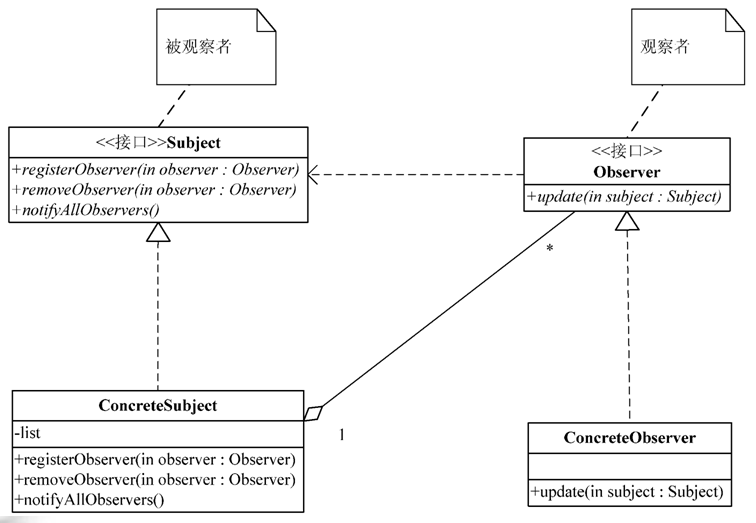
六、"拉数据"静态类图
所谓"拉数据",观察者对象含有一个对被观察者对象实例的引用,当被观察者对象发生变化时,不会传递任何数据给观察者,而由观察者根据被观察者对象实例的引用主动获取相关的数据,这就形成了观察者主动从被观察对象中"拉数据“,静态类图如下:
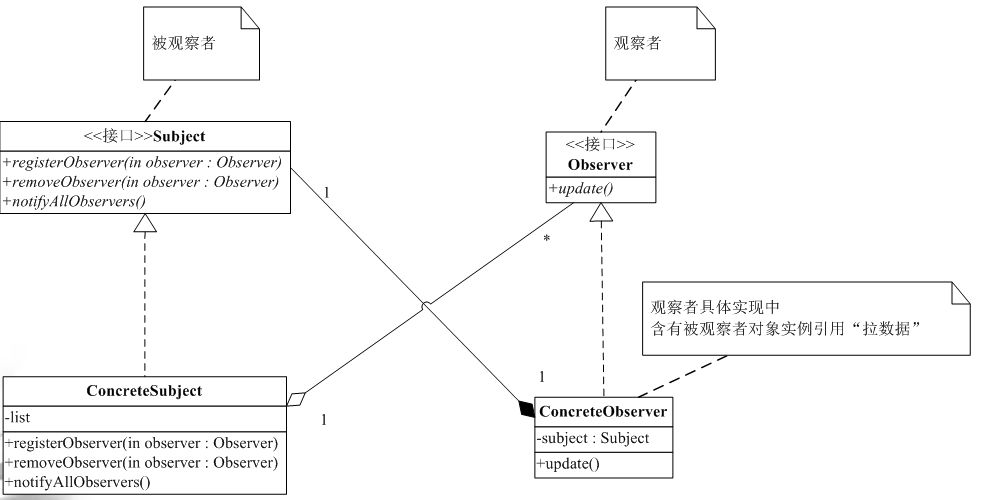
希望本文所述对大家java程序设计有所帮助。
原文链接:https://blog.csdn.net/chengqiuming/article/details/70139427





